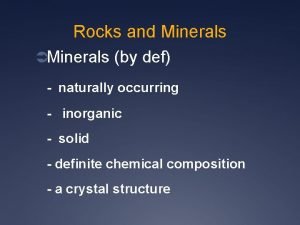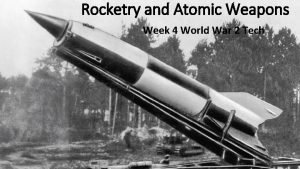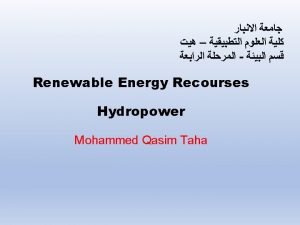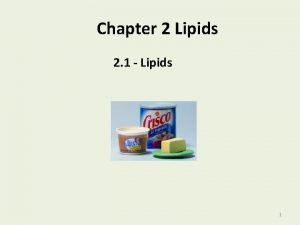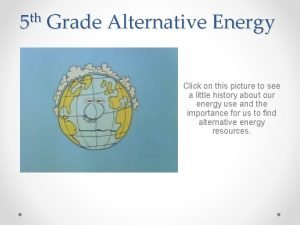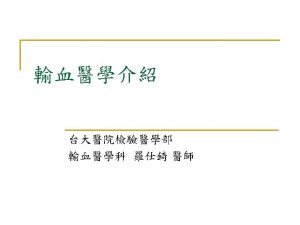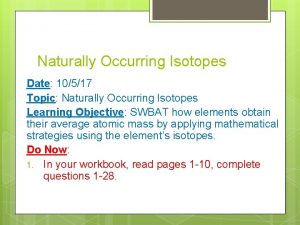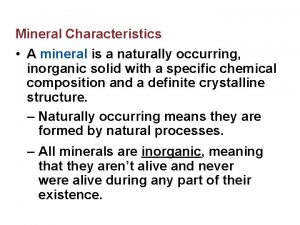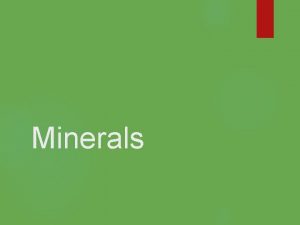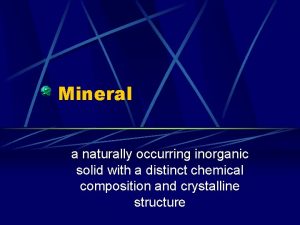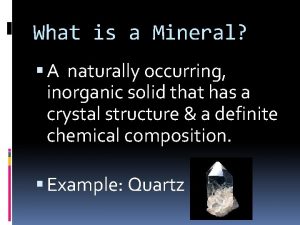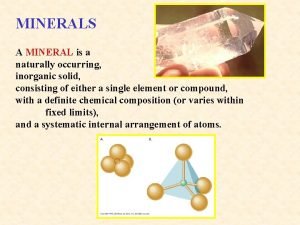An Introduction A mineral is a naturally occurring








- Slides: 8

An Introduction

�A mineral is a naturally occurring, inorganic solid with an orderly crystalline structure and a definite chemical composition. � Yes, this means that coal is not a mineral.

�Crystallization from magma: crystals form as the temperature drops below their melting points; iron, calcium, magnesium minerals solidify first, sodium, potassium, and aluminum at lower MP. �Examples: �Feldspar (used for ceramics) �Quartz (used for glass manufacture) �Muscovite (common white Mica) �Hornblende

� Precipitation: �Common minerals are dissolved in water minerals: Halite (Na. Cl), which we know as salt Gypsum (Ca. SO 4· 2 H 2 O) Calcite (Ca. CO 3)

� Pressure and temperature: some minerals form when preexisting minerals/rocks are subjected to high temperatures and pressures. � Examples: �Garnets �Chlorite in schist

� Hydrothermal solutions: high temperature solutions (100 -300 C) flowing through existing minerals/rocks, dissolve and reform into new minerals. � Examples: �Quartz (Si. O 2) �Pyrite (Fe. S 2)

� There are over 3800 named, indentified minerals, and they are broken into groups; here are some of them: � Silicates: minerals with a framework of silicon and oxygen; they are the most numerous group. � Carbonates: very common; usually a salt of a metal and the carbonate ion: CO 3 -2. � Oxides: usually metals that have reacted with oxygen � Sulfates and sulfides: metals that reacted with sulfur, some further reacted with oxygen/water/solutions � Halides: minerals where metals have reacted with halogens (group 7 A) � Native elements: some elements that are found without having reacted with another element: Gold, Silver, Copper, Sulfur, Carbon (diamond, graphite)

� Each mineral has its own unique set of characteristics. � Color � Streak: color in a powdered form or when rubbed against an unglazed white tile � Luster: reflection/sheen � Crystal form: showing the internal crystal lattice in an external form � Hardness: a relative scale: Mohs � Cleavage: tendency to break along flat surfaces � Fracture: when mineral do not cleave, the type of broken surface that does occur. � Density/specific gravity: ratio of a mineral/substance’s mass to its volume. � Others: feel (talc: greasy)
 Minerals def
Minerals def Largest naturally occurring element
Largest naturally occurring element Hydroelectric power disadvantages
Hydroelectric power disadvantages Naturally occurring areas of hydrothermal resources
Naturally occurring areas of hydrothermal resources Largest naturally occurring element
Largest naturally occurring element Naturally occuring fatty acids
Naturally occuring fatty acids Naturally occurring areas of hydrothermal resources
Naturally occurring areas of hydrothermal resources H
H Is a naturally occurring association among specific things
Is a naturally occurring association among specific things
